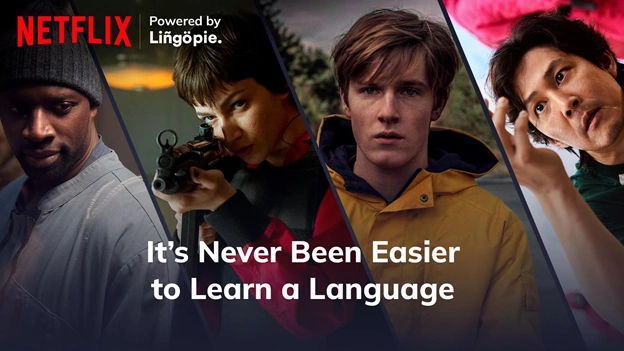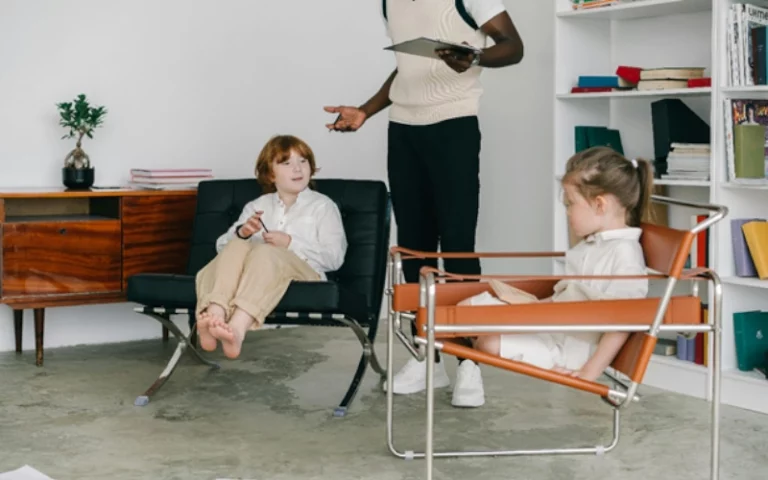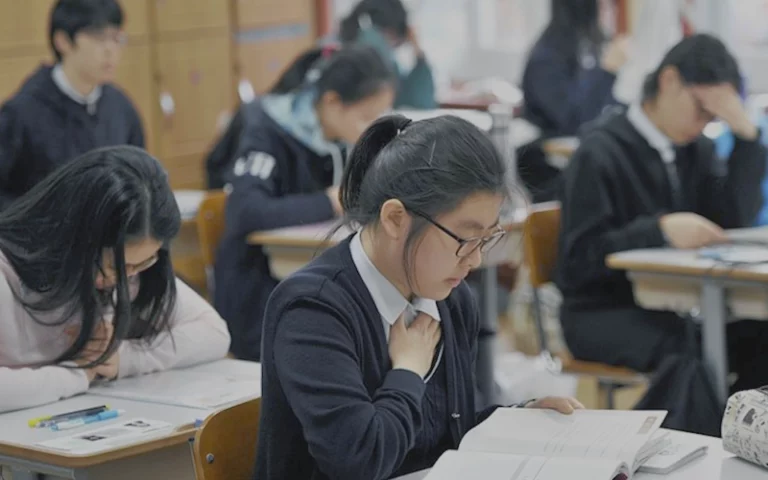Table of Contents
Television shows and movies are one of the best ways to learn a new language. The process is not about only understanding the target language itself but how that new culture behavior, accent, body language, gestures are part of the learning; and television can help you with this.
Have you ever think about how cool would it be if nice if you can learn a language with the help of TV shows and movies? If you are wondering whether this is even possible, then the answer is a resounding yes. This article gives you information on how using foreign TV shows and movies can help you learn a new language.
Using TV shows and movies to learn a new language is possible, it’s not only listening or repeat sentences but to get the feeling of that new culture: body language, gestures anything.
You may already know about several language learning apps, but are you aware of other ways to learn a language? In this article you will be shown some of the best apps that employ tactics like visual exposure and listening comprehension to immerse you in, learn and practice a new language with full immersion.
Proponents of the so-called Natural Method of language teaching swear by it. The method, developed by Alexander Arguelles and Richard Yelland, doesn’t utilize word books, vocab lists, grammar explanations or any other traditional classroom aids.
No, instead students learn a language through immersion: listening to it being spoken, watching movies in it, reading and writing it just as they would read and write their native language.
Why TV Shows and Movies Help Language Learning
This article is about how TV shows and movies can help you learn a language. I’ve found that watching movies in another language can be very helpful for improving your listening comprehension, as well as for learning vocabulary and grammar.
The most obvious reason why this happens is that you have to pay attention to what’s happening on the screen in order to understand it. This helps strengthen your listening skills, which are essential to learning a new language.

Another reason why movies are so good for learning languages is that they contain all sorts of different types of language: slang, formal speech, colloquialisms, technical terms and more.
The more variety you can hear and understand, the better prepared you’ll be for real-world situations where you might hear any combination of these things in one sentence!
In addition to all this, movies also give us exposure to cultural references (such as pop culture) that we wouldn’t find in a textbook or classroom setting alone. This makes them more fun and engaging than other types of media too!
Use the Subtitles Effectively
In today’s world of endless streaming content, subtitles have become essential tools for enjoying our favorite shows and movies in various languages. However, with the power of Lingopie, subtitles have transcended from being mere translations to becoming effective instruments for language learning.
In this blog section, we will explore how to use subtitles effectively, with a focus on Lingopie’s unique feature of toggling on your target language and your native language in the same show.
Double the Subtitles, Double the Learning
The beauty of Lingopie lies in its ability to display two sets of subtitles simultaneously. This innovative approach allows language learners to have the original language subtitles alongside the translated version, making it easier to grasp new vocabulary and sentence structures.
Imagine watching a Spanish series with both Spanish and English subtitles on the screen. As the dialogue progresses, you can easily compare the original text with its translation, helping you understand the nuances of the language and the story without the need to pause or rewind constantly.
How to Toggle On Two Subtitles
Lingopie has made it incredibly simple to enable dual subtitles on your favorite shows. Here’s a step-by-step guide on how to do it:
- Choose your desired show or movie from Lingopie’s vast library of content.
- Click on the settings icon (represented by a square “cc”) located at the bottom right corner of the video player.
- In the settings menu, you’ll see options for “target language” and “primary language.”
- Select the original language for “target language” and your native language (or the language you’re most comfortable with) for “primary language.”
- Close the settings menu and enjoy your show with dual subtitles.

Maximizing the Benefits
To make the most of Lingopie’s dual subtitle feature, it’s essential to approach it with an active learning mindset. Here are some tips to enhance your experience:
- Focus on the original language first: Try to understand the dialogue using the primary subtitles before glancing at the translated version. This will train your brain to process the new language more effectively.
- Take notes: Jot down new words, phrases, or expressions that you come across. This will help reinforce your learning and provide a reference for future practice.
- Pause and rewind: Don’t hesitate to pause or replay a scene if you need more time to understand the dialogue or to focus on a particular phrase.
- Practice speaking: Repeat the lines or phrases out loud to improve your pronunciation and speaking skills.
By incorporating these strategies, you’ll not only enjoy your favorite content but also fast-track your language learning journey. So, go ahead and explore the world of Lingopie, where entertainment meets education, and subtitles become your ultimate language learning ally.
Don’t Forget Comprehension-Building Techniques While Learning a Language with Television
While watching television shows or movies is a fantastic way to immerse yourself in a new language, it’s essential not to neglect comprehension-building techniques that’ll help you understand and retain the language better. After all, passively watching your favorite show won’t magically make you fluent.
A great comprehension-building technique is to actively engage in conversation with native speakers, friends, or language exchange partners. Discuss the shows you’re watching, share your thoughts on the plot, and even attempt to reenact a scene or two!
This interactive approach not only helps you practice speaking but also reinforces your understanding of the language’s nuances. Remember, the more you actively participate in your language learning journey, the smoother your path to fluency will be. Happy binge-watching and language learning!
Movies and TV Can Focus on Vocabulary
One of the most exciting aspects of learning a new language through movies and TV is the opportunity to expand your vocabulary in a fun and engaging way. Unlike traditional study methods, which can sometimes feel repetitive and tedious, watching movies and TV shows allows you to absorb new words and phrases in context, making it much easier to remember and apply them in real-life situations.
Plus, who wouldn’t love the idea of binge-watching their favorite Spanish shows to learn Spanish on Netflix as a way to study?
Moreover, diving into movies and TV series exposes you to a wide range of vocabulary that spans various topics, accents, and dialects. This exposure helps you become more versatile in your language skills, allowing you to adapt and communicate effectively in different situations.
To make the most of this learning experience, try watching shows from different regions or genres, and maintain a vocabulary journal to jot down new words and expressions as you encounter them. The more you immerse yourself in diverse content, the richer your vocabulary will become, and you’ll be one step closer to mastering your target language.

TV Can Take You Inside the Culture You Are Learning About
Diving into the world of television shows and movies isn’t just about language learning; it’s also an incredible way to gain invaluable insights into the culture you’re exploring.
Watching authentic content from the country of your target language offers a unique, immersive experience that allows you to understand the customs, beliefs, humor, and social dynamics of the people.
For example, when you learn Spanish with Lingopie, you’re not only improving your language skills but also getting an insider’s perspective on the diverse and vibrant cultures of the Spanish-speaking world.
Furthermore, movies and TV series often depict various aspects of daily life that might not be covered in traditional language courses or textbooks. By observing how people interact, celebrate, and even express their emotions on screen, you can gain a deeper appreciation for the cultural nuances and develop a more authentic linguistic style.
So, the next time you’re watching a show or movie in your target language, pay attention to the cultural context and subtleties. It’s these little details that’ll truly enrich your language learning journey and help you connect with native speakers on a deeper level. Happy watching and learning!
Last Thoughts
So, we’ve talked about how watching movies and TV shows can be a fun and effective way to learn a new language, right?
Not only do they help you build your vocabulary and sharpen your comprehension skills, but they also give you a unique inside look at the culture you’re learning about. Plus, you get to binge-watch your favorite shows like Spanish shows on Netflix or learn Spanish with Lingopie – how cool is that?
The key takeaway here is to make sure you’re actively engaging with the content, whether that means pausing and rewinding to analyze tricky phrases, discussing the shows with native speakers, or keeping a vocabulary journal.
Remember, language learning should be an enjoyable and immersive experience that lets you explore the fascinating world of different cultures. Now, it’s your turn to share your thoughts and experiences with language learning through movies and TV shows!
Drop a comment below or share this article with your friends, and let’s keep the conversation going.

Ihsan Sharif is a talented writer known for his engaging articles on linguistic topics. With a keen eye for detail and a passion for language, Ihsan brings complex linguistic concepts to life, making them accessible and interesting to a wide audience.




